 W
WAcidava (Acidaua) was a Dacian and later Roman fortress on the Olt river near the lower Danube. The settlements remains are located in today's Enoşeşti, Olt County, Oltenia, Romania.
 W
WAdjud is a city in Vrancea County, Western Moldavia, Romania. It has a population of 14,670 inhabitants (2011). It lies at a railway junction which has a classification yard and a passenger station. Adjud, situated north of the point where the Trotuș River enters the Siret River, used to be a marketplace.
 W
WAedava was a Dacian settlement located south of the Danube in Moesia. In his De Aedificiis, the 6th century AD historian Procopius placed Aedava on the Danubian road between Augustae and Variana. He also mentioned that Emperor Justinian restored the damaged portion of the town defenses.
 W
WAedava was a Dacian settlement located south of the Danube in Moesia. In his De Aedificiis, the 6th century AD historian Procopius placed Aedava on the Danubian road between Augustae and Variana. He also mentioned that Emperor Justinian restored the damaged portion of the town defenses.
 W
WAiadava was a Dacian town in the Remesiana region, present day Bela Palanka, Serbia.
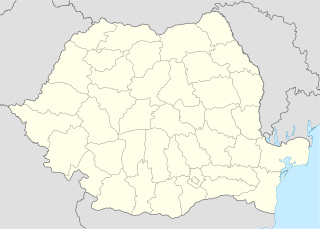 W
WAizis was a Dacian town mentioned by Emperor Trajan in his work Dacica. Located at Dealul Ruieni, Fârliug, Caraș-Severin, Banat, Romania.
 W
WAizis was a Dacian town mentioned by Emperor Trajan in his work Dacica. Located at Dealul Ruieni, Fârliug, Caraș-Severin, Banat, Romania.
 W
WAmutria was a Dacian town close to the Danube and included in the Roman road network, after the conquest of Dacia.
 W
WApulon was a Dacian fortress city close to modern Alba Iulia, Romania from where the Latin name of Apulum is derived. The exact location is believed by many archaeologists to be the Dacian fortifications on top of Piatra Craivii, Craiva, Cricău, about 20 km north of Alba-Iulia.
 W
WArcobara was a Dacian town mentioned by Ptolemy.
 W
WArgedava was an important Dacian town mentioned in the Decree of Dionysopolis, and potentially located at Popești, a district in the town of Mihăilești, Giurgiu County, Muntenia, Romania.
 W
WArgidava was a Dacian fortress town close to the Danube, inhabited and governed by the Albocense. Located in today's Vărădia, Caraş-Severin County, Romania.
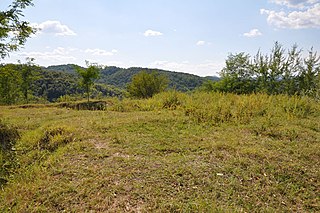 W
WBuridava (Burridava) was a Dacian town. situated in Dacia, later Dacia Apulensis, now Romania, on the banks of the river Aluta now Olt
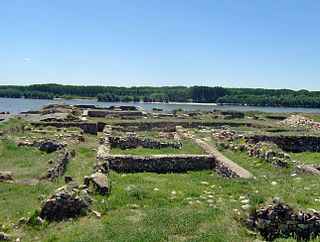 W
WCapidava was an important Geto-Dacian center on the right bank of the Danube. After the Roman conquest, it became a civil and military center, as part of the province of Moesia Inferior, modern Dobruja.
 W
WIt was a Dacian fortified town.
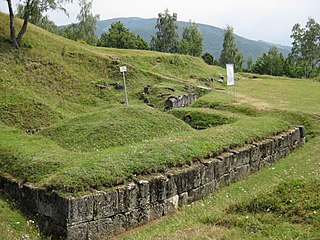 W
WThe Costești-Cetățuie Dacian fortress was a Dacian fortified town. Located near Costești village, Hunedoara County, Romania, it belongs to the Dacian Fortresses of the Orăștie Mountains World Heritage Site. The fortress was built in the 1st century BC, during Burebista’s rule, with the purpose of defending the area against the Romans.
 W
WCumidava was originally a Dacian settlement, and later a Roman military camp on the site of the modern city of Râşnov in Romania.
 W
WDacidava was a Dacian fortified town, located in the North-Western part of present Transylvania, Romania, about 35 km North of the border established on Meseș Mountains, which was separating the dacian territory controlled by the Roman Empire and the territories inhabited by the free Dacians. The city Șimleu Silvaniei is located near the ancient site of Dacidava.
 W
WDausdava was a Dacian town in Moesia between the Danube and the Balkan Mountains, in the region between Nicopolis and Abritus.
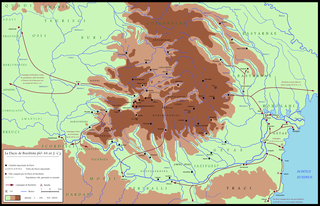 W
WDava is a Geto-Dacian name for a city, town or fortress. Generally, the name indicated a tribal center or an important settlement, usually fortified. Some of the Dacian settlements and the fortresses employed the Murus Dacicus traditional construction technique.
 W
WDinogetia was an ancient Geto-Dacian settlement and later Roman fortress located on the right (southern) bank of the Danube near the place where it joins the Siret. The Dinogetia site is situated in Northern Dobruja 8 kilometres east of Galați, Romania and 2 kilometers north of Gărvan, a village in Jijila commune.
 W
WDrobeta-Turnu Severin is a city in Mehedinți County, Oltenia, Romania, on the left bank of the Danube, below the Iron Gates.
 W
WFeţele Albe is a Dacian fortified settlement on the southern side of Muncelului Hill, situated north of Sarmizegetusa Regia, separated from it by a sharp declivity. Along with numerous walls and resulting terraces, the site contained a sanctuary with circular stone pillars on the third terrace. The settlement was destroyed during the First Dacian War, rebuilt and again destroyed by fire by Trajan's army during the Second Dacian War in 106 CE. The Romans then built a military camp (castrum) on the site.
 W
WGeoagiu is a town in Hunedoara County, in the historical region of Transylvania, Romania, located on the Mureş river at an altitude of 217 metres above sea level. The river with the same name (Geoagiu) flows in this place into the Mureș. The town has a population of 5,049. It administers ten villages: Aurel Vlaicu, Băcâia (Bakonya), Bozeș (Bózes), Cigmău (Csigmó), Gelmar (Gyalmár), Geoagiu-Băi (Feredőgyógy), Homorod (Homoród), Mermezeu-Văleni (Nyírmező), Renghet (Renget) and Văleni (Valény).
 W
WGiridava was a Dacian town, situated in Moesia, modern northern Bulgaria.
 W
WThis is a list of ancient Dacian towns and fortresses from all the territories once inhabited by Dacians, Getae and Moesi. The large majority of them are located in the traditional territory of the Dacian Kingdom at the time of Burebista. This area includes the present-day countries of Romania and Moldova, as well as parts of mostly southern and eastern Ukraine, Slovakia, Poland and Hungary, as well as ancient Moesia. However some isolated settlements are located in Dalmatia as is the case of Thermidava, or in Dardania (Kosovo) as is Quemedava.
 W
WMăcin is a town in Tulcea County, in the Northern Dobruja region of Romania.
 W
WRomula or Malva was an ancient city in Roman Dacia, later the village of Reşca, Dobrosloveni Commune, Olt County, Romania. It was the capital of Dacia Malvensis, one of the three subdivisions of the province of Dacia.
 W
WRomula or Malva was an ancient city in Roman Dacia, later the village of Reşca, Dobrosloveni Commune, Olt County, Romania. It was the capital of Dacia Malvensis, one of the three subdivisions of the province of Dacia.
 W
WSânnicolau Mare is a town in Timiș County, Romania and the westernmost of the country. Located in the Banat region, along the borders with Serbia and Hungary, it has a population of just under 12,000.
 W
WMurideva was a Dacian town in Scythia Minor, not far from Zaldapa.
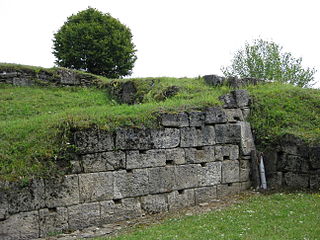 W
WMurus Dacicus is a construction method for defensive walls and fortifications developed in ancient Dacia sometime before the Roman conquest. It is a mix between traditional construction methods particular to Dacian builders and methods imported from Greek and Roman architecture and masonry, and – although somewhat similar construction techniques were used before, during and long after the period – it has peculiarities that make it unique.
 W
WOescus, Palatiolon or Palatiolum was an ancient town along the Danube river, in Moesia, northwest of the modern Bulgarian city of Pleven, near the village of Gigen. It is a Daco-Moesian toponym. Ptolemy calls it a Triballian town, but it later became Roman. For a short time, it was linked by a bridge with the ancient city of Sucidava. The city seems to have at one point reached a size of 280,000 m² and a population of 100,000.
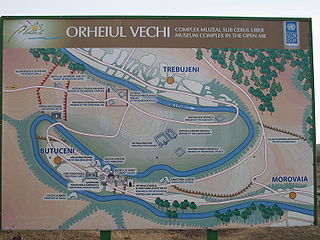 W
WOld Orhei is a Moldovan historical and archaeological complex located in Trebujeni, which is approximately 60 kilometres (37 mi) north-east of Chişinău on the Răut River in the Republic of Moldova.
 W
WPelendava was a Dacian town.
 W
WPiatra Roşie, which means Red Rock, was a Dacian hill fort two days march to the west from Costeşti-Cetăţuie fortress, at Luncani in Boşorod municipality. It was built in two phases. In the first phase a long rectangular main citadel was built at the height of land with watch towers on each end and two outlying watch towers. Later the larger area inside the watch towers was enclosed with walls. It appears that the hilltop was flattened in the process in order to produce a usable space.
 W
WPiroboridava was a Dacian town mentioned by Ptolemy, and archaeologically identified at Poiana, Galați, Romania. Second part name of the city Dacian dava shows significance of the tribal city.
 W
WTurda is a city in Cluj County, Transylvania, Romania, situated on the river Arieș.
 W
WRatiaria was a city founded by the Moesians, a Daco-Thracian tribe, in the 4th century BC, along the river Danube. In Roman times it was named Colonia Ulpia Traiana Ratiaria.
 W
WRezina is a city in Moldova and the capital of Rezina District. Three villages are administered by the city: Boşerniţa, Ciorna and Stohnaia.
 W
WRomula or Malva was an ancient city in Roman Dacia, later the village of Reşca, Dobrosloveni Commune, Olt County, Romania. It was the capital of Dacia Malvensis, one of the three subdivisions of the province of Dacia.
 W
WSacidava (Sagadava) was a Dacian town in Moesia Inferior, today's Dunăreni, Constanţa, Romania. Not to be confused with Sacidava, near Apulon.
 W
WSângeru is a commune in Prahova County, Muntenia, Romania. It is composed of six villages: Butuci, Mireșu Mare, Mireșu Mic, Piatra Mică, Sângeru and Tisa.
 W
WŞanţul Mare is an important archaeological site located 9 km west of Pecica, Arad County, Romania, near the border with Semlac commune and 600 m from the Mureş River.
 W
WSarmizegetusa Regia, also Sarmisegetusa, Sarmisegethusa, Sarmisegethuza, Ζαρμιζεγεθούσα (Zarmizegethoúsa) or Ζερμιζεγεθούση (Zermizegethoúsē), was the capital and the most important military, religious and political centre of the Dacians prior to the wars with the Roman Empire. Erected on top of a 1200 m high mountain, the fortress, comprising six citadels, was the core of a strategic defensive system in the Orăştie Mountains.
 W
WSucidava was an ancient settlement on the Danube, between Durostorum and Axiopolis, most probably located near the modern village of Izvoarele, in Romania. Not to be confused with the Sucidava near Oescus.
 W
WThermidava was an ancient Dacian town in Illyria mentioned by Ptolemy as an inland town of Dalmatia. It could be located near modern Scodra
 W
WTibiscum was a Dacian town mentioned by Ptolemy, later a Roman castra and municipium. The ruins of the ancient settlement are located in Jupa, Caraş-Severin County, Romania.
 W
WTopalu is a commune located on the right bank of the Danube in Constanța County, Northern Dobruja, Romania.
 W
WTurda is a city in Cluj County, Transylvania, Romania, situated on the river Arieș.
 W
WZidava was a Dacian fortified town in present-day Alba County, in the Transylvanian region of Romania.
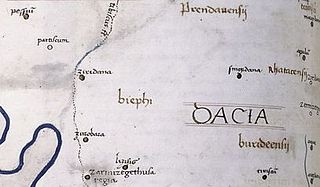 W
WZiridava was a Dacian town located between Apulon and Tibiscum, mentioned by Ptolemy in the area of the Dacian tribe of Biephi.
 W
WZurobara was a Dacian town located in today's Banat region in Romania. It is positioned by the Tibiscus river, north of Zarmizegethusa Regia and south of Ziridava. It was near the Tisza river, in the area of the Dacian tribe of Biephi.